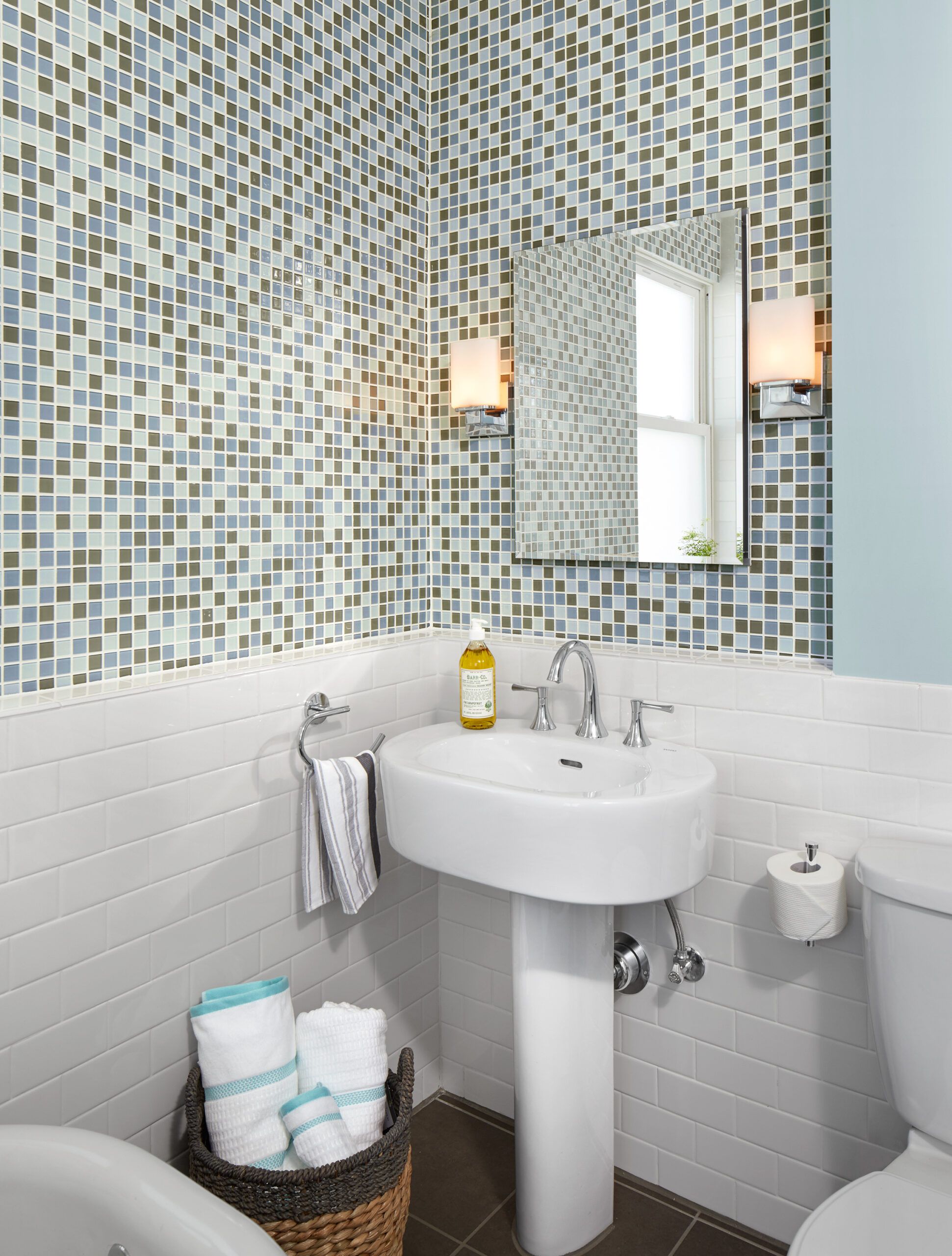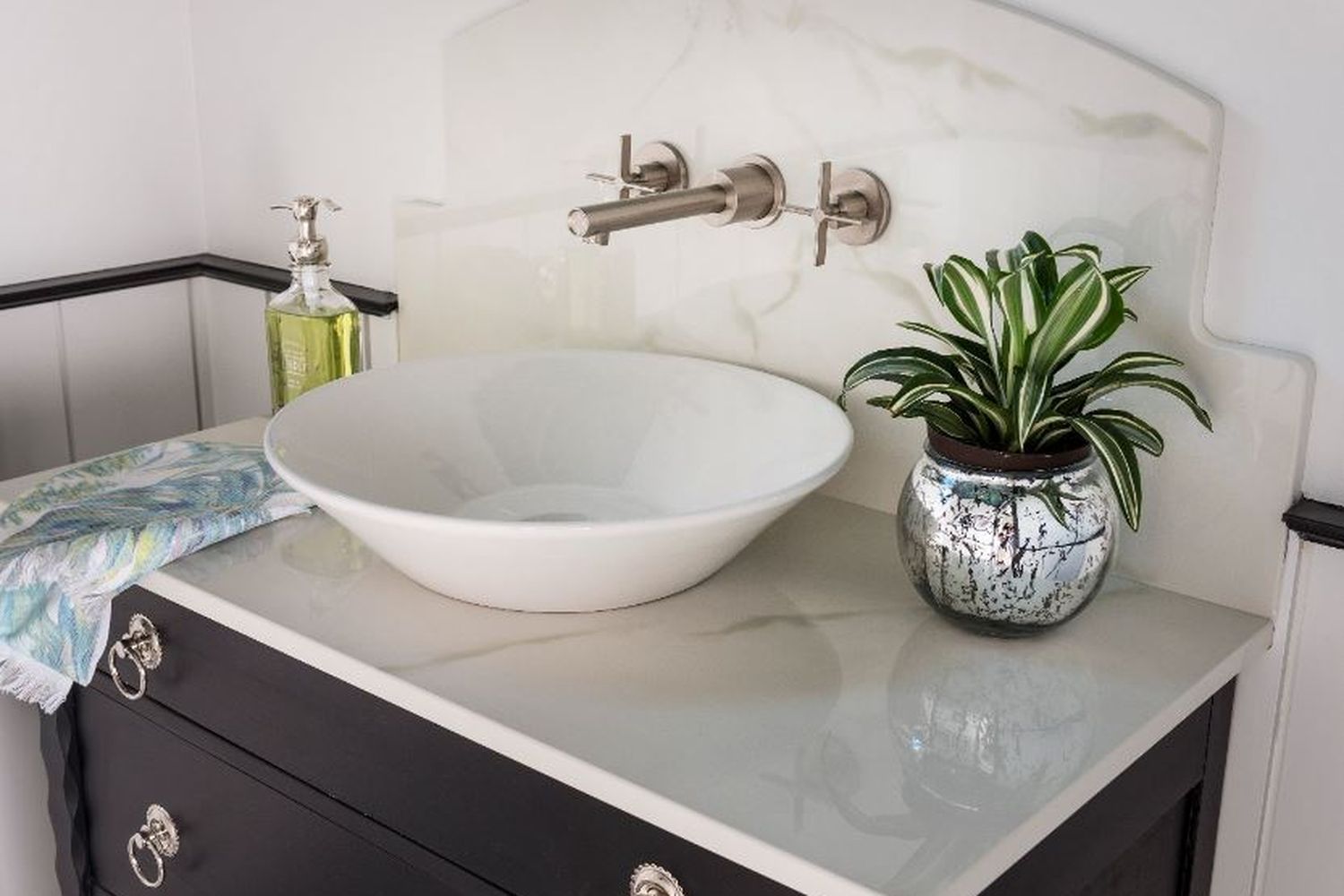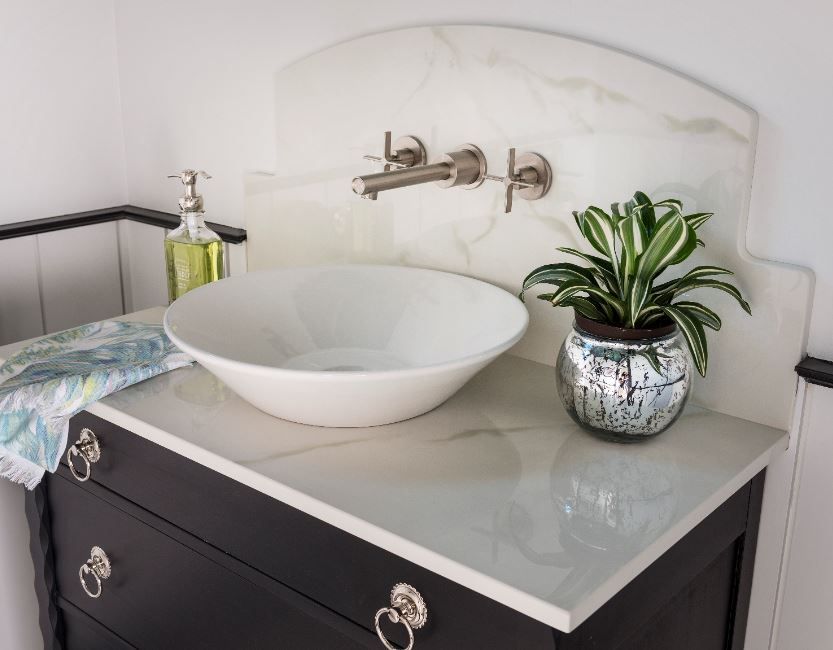Choosing the perfect bathroom sink can transform your space and reflect your personal style. However, with various materials, sizes, and designs available, finding the right sink can be overwhelming. To simplify your search, we’ll guide you through the key factors to consider when choosing a bathroom sink to help you achieve the right balance between style and functionality.
Sink Material and Size
When choosing a bathroom sink, material and size play a vital role in both looks and functionality. We’ll explore popular options and offer recommendations on finding the right size for your space.
Popular Sink Materials
When selecting a material, consider its durability, maintenance requirements, and how well it complements your bathroom’s overall design. Bathroom sinks come in a variety of materials, each with its own unique characteristics:
- Cast iron: Known for their durability and classic look, cast iron sinks are often coated with enamel.
- Glass: These sinks offer a sleek, contemporary appearance but require more maintenance.
- Metal: Stainless steel and copper sinks offer a modern look and are highly durable.
- Porcelain: The most common choice, porcelain sinks offer durability, ease of cleaning, and stain resistance.
- Stone: Natural stone sinks, such as marble or granite, offer a luxurious feel but can be more expensive.
Size Selection
The size of your bathroom sink should be proportional to your bathroom’s dimensions. For smaller bathrooms or powder rooms, a compact sink or corner design may be ideal. Larger bathrooms can accommodate more substantial sinks or even double basins for shared use.
Consider these factors when determining the appropriate size:
- Available counter space
- Bathroom layout
- Intended use (e.g., powder room vs. primary bathroom)
- Number of users
Bathroom Sink Types

There are many types of bathroom sinks to choose from, each with its own advantages and potential drawbacks. We’ll review each type below.
Drop-In Sinks
Drop-in sinks, also known as self-rimming sinks, are popular due to their easy installation and versatility. They are simple to install, compatible with most countertops, and available in various styles and materials. However, the rim can collect dirt and grime, and they may not have a sleek, modern appearance.
Farmhouse Sinks
Farmhouse sinks, also known as apron-front sinks, feature a large, deep basin with an exposed front panel. They offer a unique, rustic aesthetic, have a large capacity for washing, and make a bold design statement. Farmhouse sinks may require custom cabinetry, can be more expensive than traditional options, and may be challenging to install.
Pedestal Sinks
These freestanding fixtures include a basin supported by a column. They are ideal for small bathrooms or powder rooms, offer a classic, elegant appearance, and can make a space feel larger. Pedestal sinks have limited counter space and storage and may require professional installation. Also, the plumbing may be visible.
Undermount Sinks
Undermount sinks sit beneath the countertop, creating a seamless look. They are easy to clean, as debris can be wiped directly into the sink. They provide a modern, streamlined appearance while maximizing counter space. However, they are more challenging to install, require a solid-surface countertop, and may be more expensive than drop-in options.
Vanity Tops
Vanity tops are countertops with integrated sinks, typically crafted from materials such as quartz, marble, or granite. They boast a seamless appearance, are simple to clean, and can offer extra counter space. Vanity tops can be pricier than separate sink and counter options, offer limited sink shape choices, and can be heavy and challenging to install.
Vessel Sinks
Vessel sinks sit on top of the counter, creating a striking focal point in the bathroom. They offer a unique, eye-catching design and are available in a wide range of materials and styles. They can be easier to install than some other types. However, vessel sinks may be more difficult to clean around the base, can be less practical for everyday use (especially for children), and may require a special faucet or mounting system.
Wall-Mount Sinks
Wall-mount sinks, also called floating sinks, attach directly to the wall without any support underneath. They feature a space-saving design, are easy to clean underneath, and provide a modern, minimalist look. However, they may require additional structural support, offer limited counter space, and may expose plumbing.
Factors To Consider When Selecting a Bathroom Sink
Several factors, including your available space and maintenance preferences factors, can impact your sink’s functionality and suitability for your space. We’ll outline these key factors below.
Available Space
Assess the available space in your bathroom to determine the appropriate sink size and style. For smaller bathrooms, wall-mounted or corner sinks can help maximize space, while larger bathrooms can accommodate more substantial options like double vanities.
Frequency of Use
Consider how often the sink will be used and by how many people. A heavily used sink in a family bathroom may require a more durable material and practical design compared to a seldom-used powder room sink.
Maintenance Requirements
Different sink materials and styles have varying maintenance needs. Consider how much time and effort you’re willing to invest in keeping your sink clean and in good condition. For example, glass and copper sinks may require more frequent cleaning and special care versus porcelain or stainless steel options.
Storage Needs
Evaluate your storage requirements when selecting a sink. If you need additional storage space, a vanity sink with built-in cabinets or drawers may be the best choice. A pedestal or wall-mounted sink could be a stylish option for bathrooms with ample storage elsewhere.
Matching Your Sink to Your Bathroom Style
Your bathroom sink should complement the overall style of your bathroom. Here are some popular design aesthetics and sink options that pair well with them.
Modern and Minimalist
For a modern, minimalist bathroom, consider these sink options:
- Undermount sinks for a seamless look
- Vessel sinks in sleek materials like glass or stainless steel
- Wall-mounted sinks with clean lines
Traditional and Classic
To achieve a traditional or classic bathroom style, look for these designs:
- Drop-in sinks with decorative rims
- Pedestal sinks with ornate details
- Vanity tops in materials like marble or granite
Rustic and Farmhouse
For a rustic or farmhouse-inspired bathroom, consider the following options:
- Farmhouse sinks with apron fronts
- Vanity tops with integrated sinks in weathered wood or distressed finishes
- Vessel sinks made from natural materials like stone or copper
DIY vs. Professional Sink Installation
Before making your sink choice, consider the installation process and whether it’s a DIY-friendly project or requires professional help. We’ll compare both installation options below.
DIY-Friendly Options
Some sink types are more suitable for DIY installation, including the following:
- Basic wall-mounted sinks
- Drop-in sinks
- Vessel sinks
If you’re comfortable with basic plumbing and have the necessary tools, you may be able to install these sink types yourself. Consult the manufacturer’s instructions and local building codes before attempting a DIY installation.
Professional Installation Requirements
Certain sink types require professional installation, including the types below:
- Complex wall-mounted sinks
- Farmhouse sinks
- Pedestal sinks
- Undermount sinks
These installations might require specialized tools, precise measurements, or structural modifications. Heavy stone or delicate glass sinks, for instance, are often best handled by experienced installers. Hiring a professional can ensure proper installation and help prevent potential issues in the future.
Balancing Form and Function in Your Sink Choice
When choosing a bathroom sink, look for the right balance between visual appeal and practicality. By carefully considering both aesthetic and functional factors, you can select a sink that not only enhances the look of your bathroom but also meets your daily needs.
Consider how the sink will contribute to your bathroom’s overall look by choosing a style that complements your bathroom’s design theme. Consider unique shapes or features that can serve as focal points. Select a material that enhances the room’s color palette
Don’t overlook practical aspects when choosing your sink. Ensure it is an adequate size for your needs and compatible with existing plumbing. You should also consider durability, resistance to stains or scratches, and ease of cleaning and maintenance. Choose a sink that’s a proper height for comfortable use.


